A life as a Koi Carp. - [ENG-ITA]
I have always been deeply fascinated by Koi Carp, as a child for their wonderful colors and the unique fantasies I saw shining in their livery, but as I grew up and studied these splendid creatures, I discovered more and more fascinating things about them.
Most of us know Pokemon more or less, we remember MagiKarp very well, who, although it was a rough animated representation of Koi Carp, the name represented it perfectly, because it is truly a magical creature, starting from its adaptation capacity and its ability to live well beyond the average lifespan of other fish, but far beyond.
Da sempre mi hanno profondamente affascinato le Carpe Koi, da bambino per i loro colori meravigliosi e le fantasie uniche che vedevo brillare nelle loro livree, ma man mano che crescevo e studiavo queste splendide creature, scoprivo sempre più cose affascinanti a loro riguardo.
Tutti bene o male conosciamo i Pokemon, ci ricordiamo benissimo MagiKarp, che sebbene fosse una rappresentazione animata e un po' grezza della Carpa Koi, il nome la rappresentava perfettamente, perchè è veramente una creatura magica, a partire dalla sua capacità di ambientamento e di riuscire a vivere molto oltre la soglia media degli altri pesci, ma molto oltre.


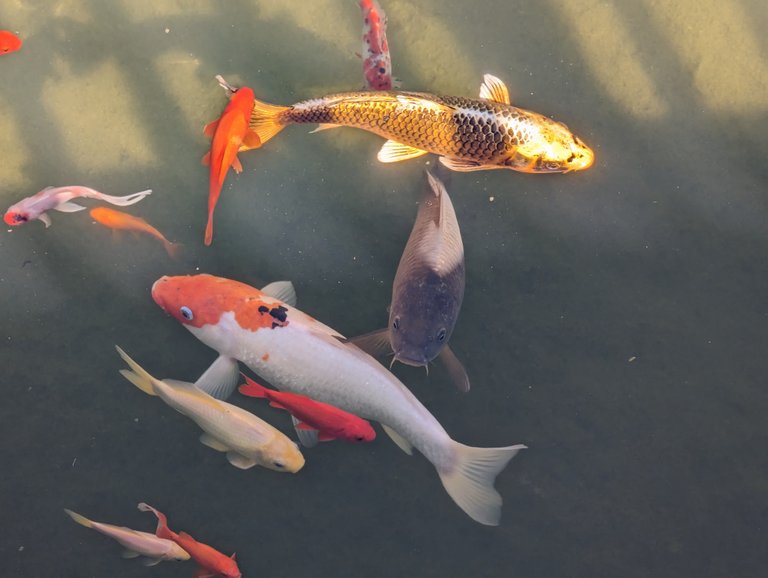




Although it is reported in scientific descriptions that this fish has an average life span of about 30/35 years, recent studies and research have confirmed that in many cases of breeding in captivity, in favorable environments and conditions where the fish has adapted well, these creatures have lived ultracentenarian lives, with some unique cases where it has been reported that they have surpassed 200 years of life. Incredible, isn't it?
When I first read about this, I was immediately skeptical because I thought that there could be no DNA evidence or testimonies to confirm the veracity of these statements. But I didn't know that from the fish scales, one could precisely determine the age of the creature, much like with trees, which form a ring every year, even the scales of the fish form a new piece every year, which is noticeable as different from the previous year's piece and by taking a scale to analyze it under a microscope, one can observe and count all the sections that have formed a new piece of scale each year.
Bensì si trovi riportato nelle descrizioni scientifiche, che questo pesce ha una vita media di 30/35 anni circa, studi e ricerche più recenti, hanno confermato che in molti casi di allevamento in cattività, in ambienti e condizioni favorevoli dove il pesce si è ben ambientato, queste creature hanno vissuto vite ultracentenarie, con alcuni casi unici, dove è stato riportato che hanno superato i 200 anni di vita. Incredibile no?
Quando ho letto per la prima volta questa cosa, subito fui scettico, perchè avevo pensato, che non ci potessero essere prove del DNA o testimonianze che confermassero la veridicità di queste affermazioni. Ma non sapevo che dalle squame dei pesci si potesse risalire con perfetta precisione all'età della creatura, un po' come si fa con gli alberi, che ogni anni formano un anello, anche le squame dei pesci formano un pezzo nuovo ogni anni, che si nota differente da quello dell'anno precedente e prelevando una squama per analizzarla a microscopio si possono osservare e contare tutti gli scaglioni che hanno formata ogni anno un pezzo nuovo di squama.

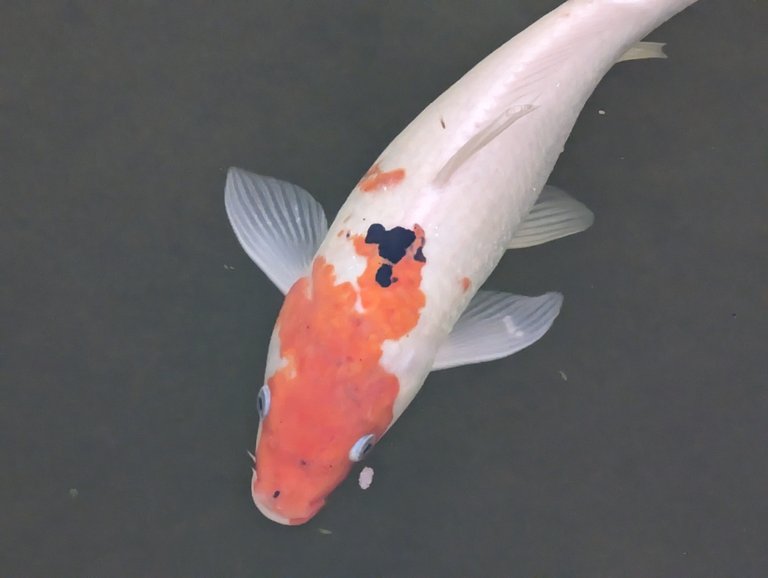
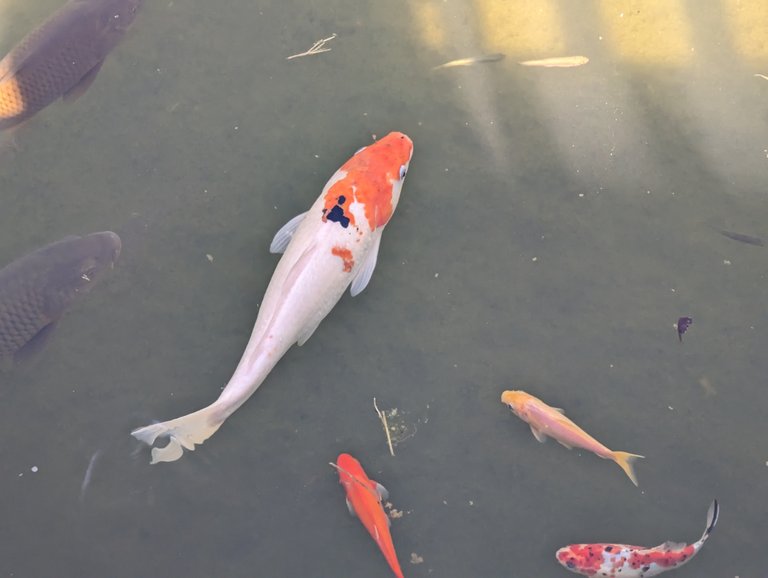
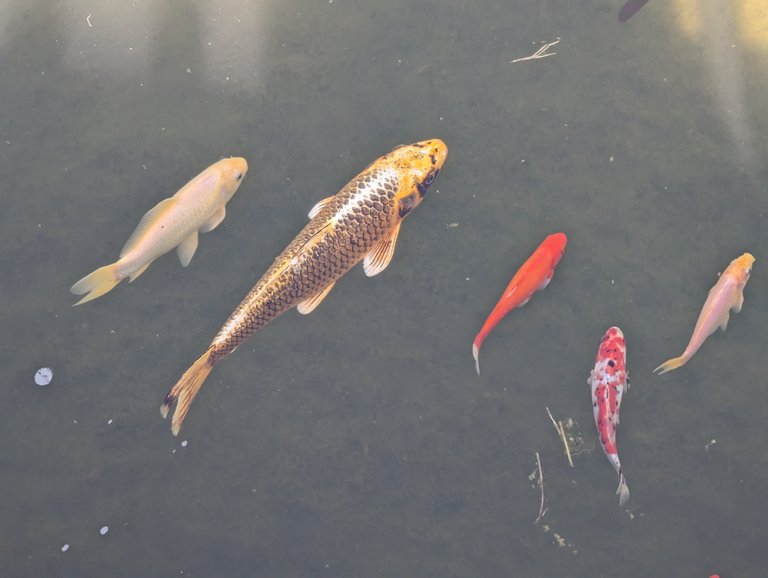
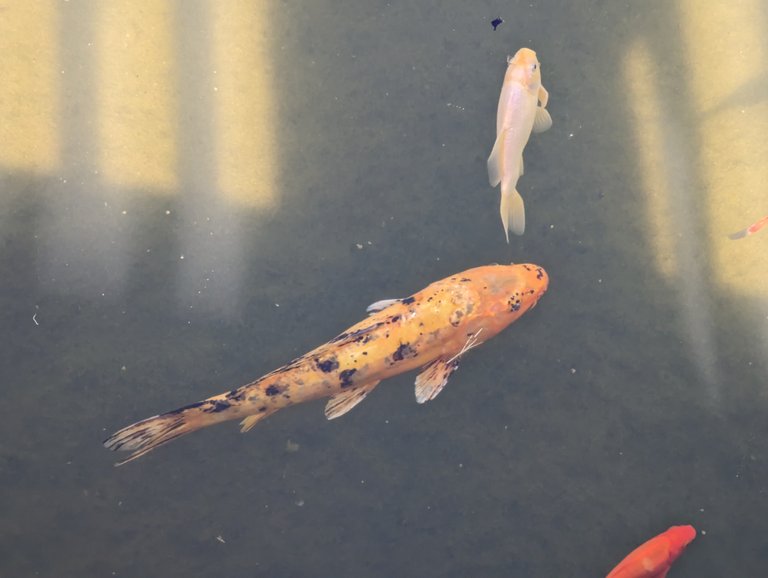
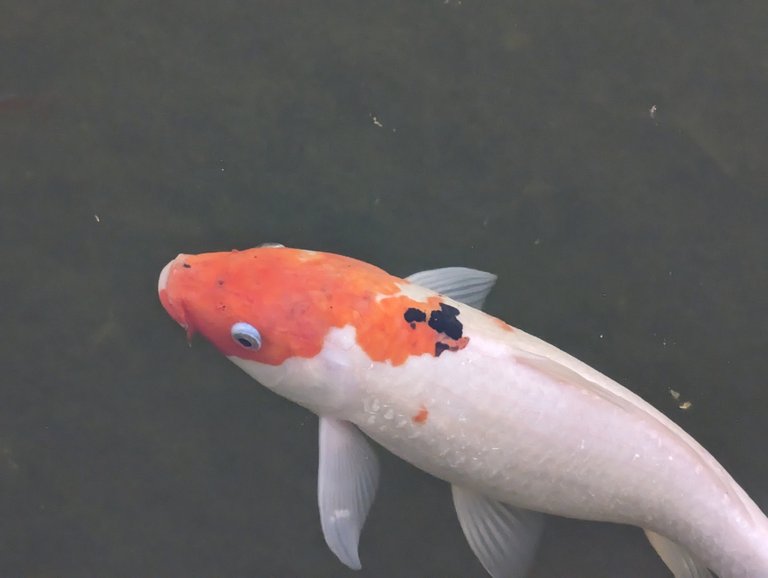

For this reason, especially in the East, they have always been a symbol of longevity, good luck, success, and prosperity.
Legend has it that Koi Carp descended from a black carp that Confucius gave to King Shoko of Ro.
In ancient East, these carp were raised in rice fields, so they fertilized the rice that grew more abundantly and also provided fish to eat. Later introduced to Japan for the same purpose, during a long period of harsh cold, some specimens began to assume different colors, so they began to breed them separately in small ponds, no longer as fish to feed on but as pets.
Per questo motivo, sopratutto in oriente, sono da sempre un simbolo di longevità, buona fortuna, successo e prosperità.
La leggenda narra, che le Carpe Koi discendano da una carpa nera che Confucio donò al Re Shoko di Ro.
Nell'antico oriente, queste carpe venivano allevate nelle risaie, così concimavano il riso che cresceva più abbondante e fornivano anche del pesce di cui cibarsi. Introdotte successivamente in Giappone per lo stesso scopo, durante un lungo periodo di freddo rigido, alcuni esemplari avevano iniziato ad assumere colorazioni diverse, così iniziarono ad allevarli separatamente in piccoli stagni, non più come pesci con cui sfamarsi, ma bensì come animali da compagnia.


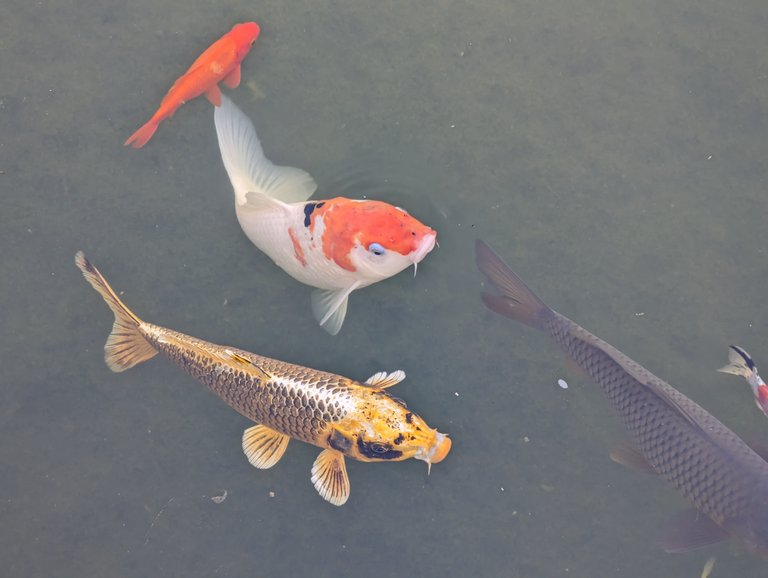
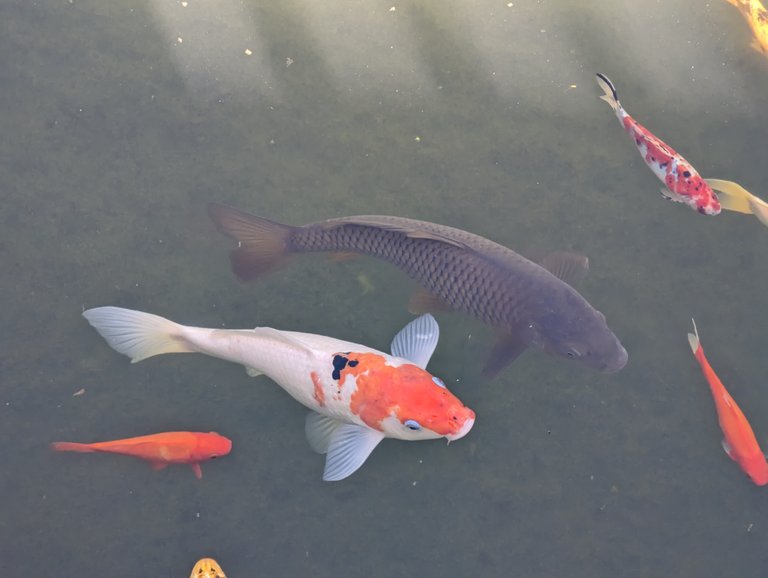
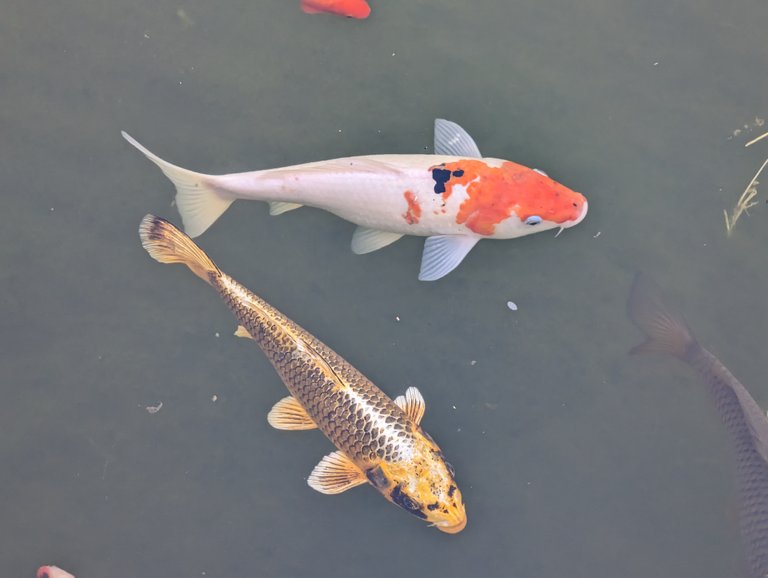

In this post, I uploaded photos of some specimens that I photographed in a small pond a few days ago while waiting for the opening of a nursery where I had gone to buy some plants like tomatoes, eggplants, zucchini, etc. There were a lot of fish in a small body of water, especially small ones, but some were much larger, and I managed to highlight their splendid livery, which were true works of art created by Mother Nature. The one that had struck me the most was the gold and black carp; it almost seemed fake, if it hadn't been swimming and moving, because it had a shine and reflections that looked like solid gold.
In questo post, ho caricato le foto di alcuni esemplari che ho fotografato in un piccolo stagno pochi giorni fa, mentre aspettavo l'apertura di un vivaio, dove ero andato a comprare alcune piante di pomodoro, melanzane, zucchine ecc... C'erano moltissimi pesci in un piccolo specchio d'acqua, sopratutto piccoli, ma alcune erano di dimensioni molto maggiori e sono riuscito a mettere in risalto le loro splendide livree, che erano delle vere opere d'arte create da Madre Natura. Quella che più mi aveva colpito, era la carpa color oro e nero, sembrava quasi finta, se non fosse stato che nuotava e si muoveva, perchè aveva una lucentezza e dei riflessi che sembra fatta di oro massiccio.

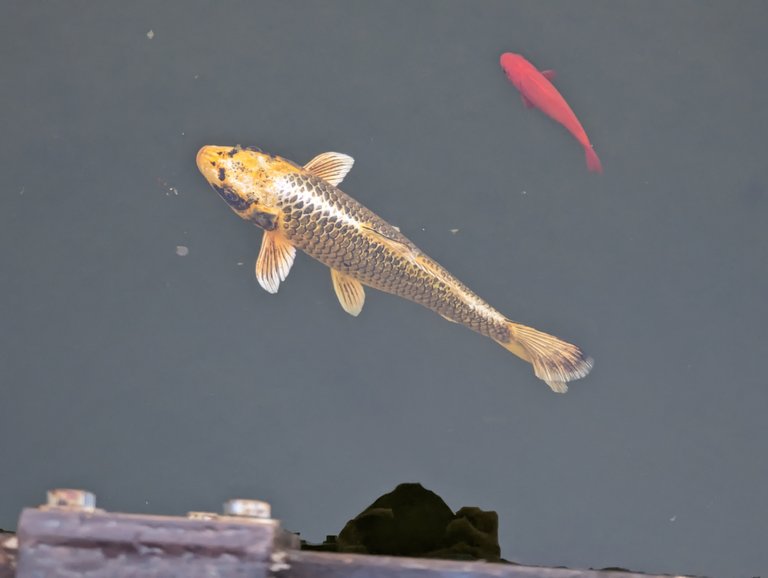
I didn't correct this image intentionally, because I liked that you could also see the reality of the image, with my reflection photographing the pond.
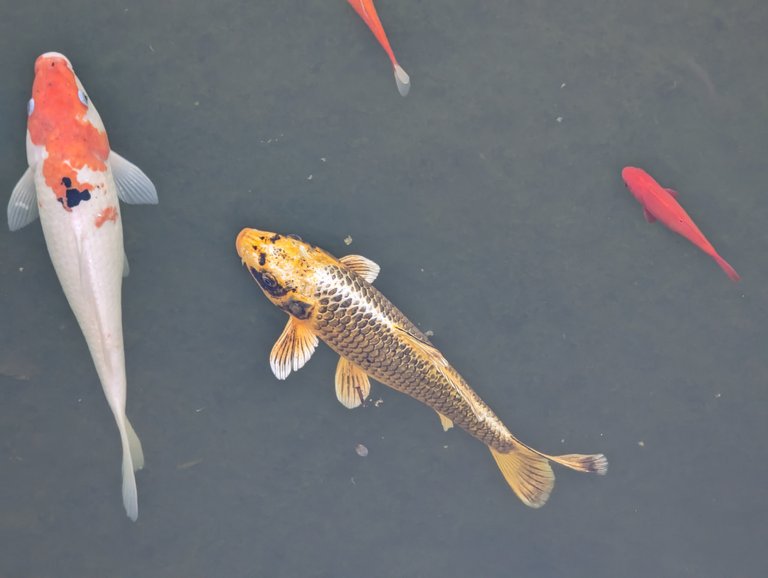
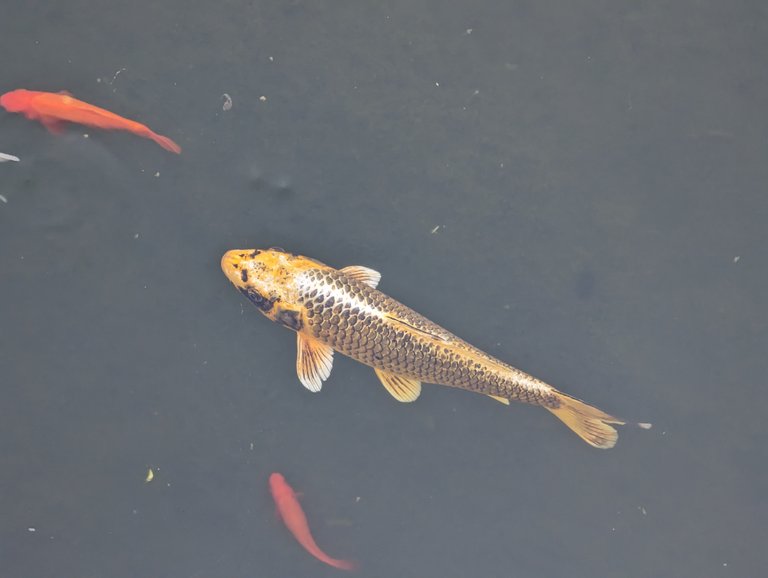


Beautiful, wonderful, fascinating, but trapped in a small pond ...
When I think that one of these poor creatures will swim back and forth in a few meters of water for 200 years, I feel sorry for it. Surely, in nature, it is almost impossible for them to live for so long, but two balls of gas can create a fish that spends a hundred years or more locked up in an aquarium or pond... I like to see them and I have also taken pictures of them, but I always prefer animals to live freely in nature, even if it means I won't be able to see them in person or it becomes difficult. They thrive in their natural environment, even though they are considered domestic animals today, like birds, reptiles, or others. I do not criticize those who love and want to take care of these animals, as I would be a hypocrite since I have also kept them. However, I have stopped because I have realized that nature should be preserved and admired in its original place, and it is useless to try and bring it home just because we like to see it. It is better for nature to remain where it truly belongs.
Dear friends and readers, that's all for now. I hope you had a good holiday. Thank you for your attention, a big hug from @stea90.
Bellissime, meravigliose, affascinanti, ma chiuse in un piccolo stagno...
Dove se penso che una di queste povere creature scamperà 200 anni, per fare avanti e indietro in pochi metri d'acqua, mi viene male a me per lei. Sicuramente in natura è quasi impossibile che possano vivere così a lungo, ma che due palle stratosferiche si può fare un pesce che passa cent'anni o oltre chiuso in un acquario o in uno stagno... Mi piace vederli e sono stato li anche a fotografarli, ma preferisco sempre che gli animali vivano liberi in natura, anche se questo mi priva o rende difficile vederli da vivo, ma stanno bene nel loro ambiente naturale, sebbene oggi giorno siano considerati animali domestici, come uccelli, rettili o altro. Non critico assolutamente chi ama e vuole prendersi cura di questi animali, sarei ipocrita perchè li ho tenuti anch'io, però poi ho smesso, perchè ho capito che la natura va preservata e ammirata nel suo posto di origine ed è inutile volerla portare a casa propria perchè piace vederla, sta meglio dove è realmente casa sua.
Cari amici e lettori, con questo è tutto, spero che abbiate passato delle buone festività. Vi ringrazio per la vostra attenzione, un grande abbraccio dal vostro @stea90.

All texts, photos, videos and images in this post are property of the author @stea90 - For CCO images that may be used, the source is always declared.
|Camera | Google Pixel 7 Pro |

Image processing: GIMP and Inkscape
Photo processing and development: Photoshop Express

Pinmapple
Black and White
Foodies Bee Hive
LeoFinance
Instagram Dalla Stella Federico
Twitter Crypto Stea
Youtube Crypto Stea
If you want to support a good Witness and his great work to help so many users on Hive, vote for @Discovery-it as Witness.
You can also help with a delegation for @Discovery-it.


Congratulations, @stea90 Your Post Got 100% Boost.
@stea90 Burnt 34.461 UPME & We Followed That Lead.
Contact Us : CORE / VAULT Token Discord Channel
The colors of these fish are fantastic. Each fish seems painted from a child's imagination. !CTP
Congratulations, @stea90 Your Post Got 100% Boost.
@stea90 Burnt 44.42 HELIOS & We Followed That Lead.
Contact Us : HELIOS Token Discord Channel
What a great story and magnificent photos of Koi Carp! I didn't know that they can live that long! I saw them only once in the natural habitat, but unfortunately, many times in too small ponds and aquariums...
Also, the story about using them in rice fields has a lot of sense, and seeing carp (not Koi) in the rice fields of Lake Albufera in Spain got a logical explanation!
I have picked this post on behalf of the @OurPick project which will be highlighted in the next post!
Yay! 🤗
Your content has been boosted with Ecency Points, by @stea90.
Use Ecency daily to boost your growth on platform!
Support Ecency
Vote for new Proposal
Delegate HP and earn more
SALUDO COMO ESTAS AMIGO AMO LOS KOY Y TENGO CRÍAS PERO NO HE TENIDO SUERTE CON LA FOTOGRAFÍA MI MAESTROS RAFAEL SAVATORE SOY PINTOR Y GRACIAS POR VOTAR SOY NUEVO Y MI SALUD ME RECUPERÁNDOME DEL COVID TODAVÍA HAY MUCHOS CASOS .